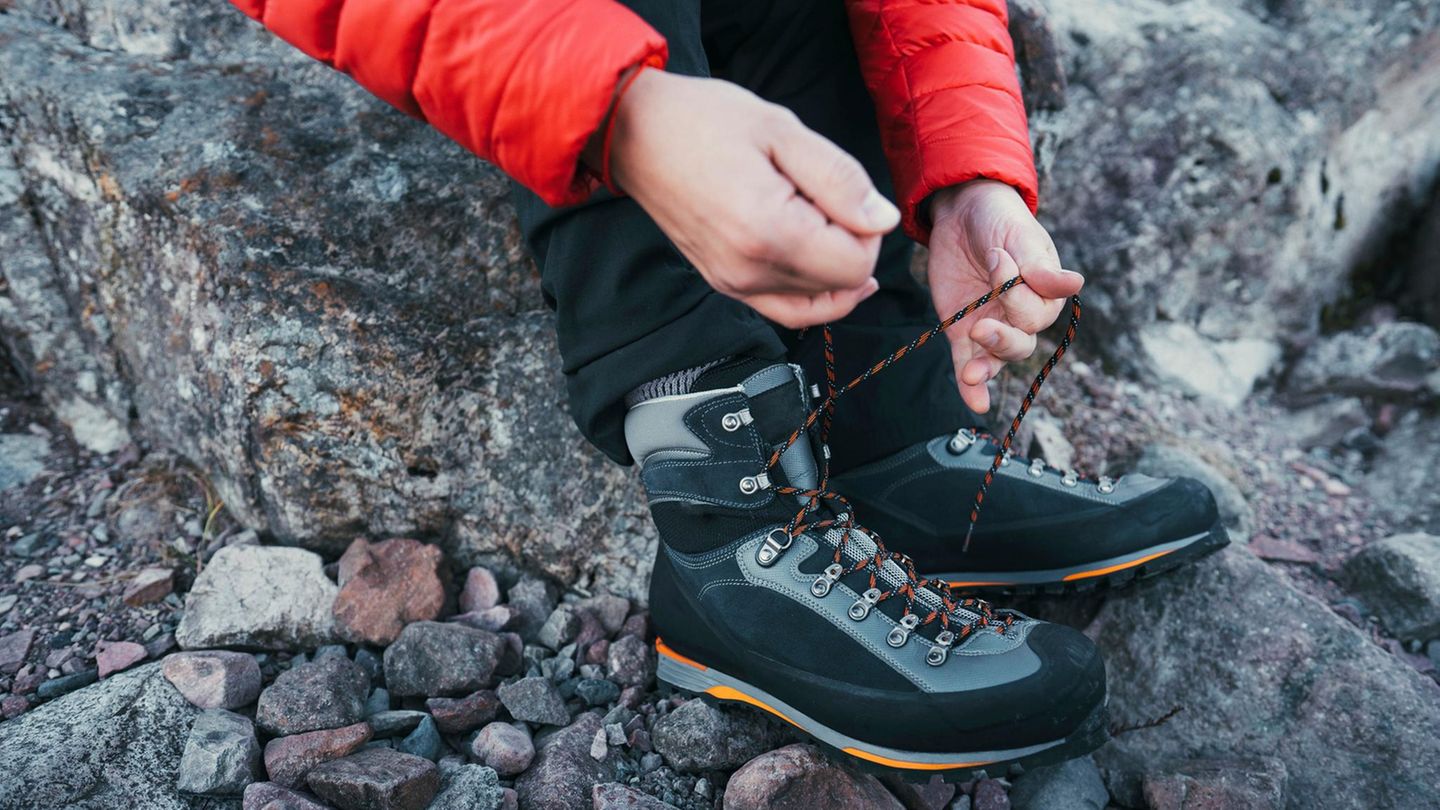Safe on the rock
With the right shoes, mountaineering becomes a feeling of luck
Those who go into the mountains need reliable shoes. Which properties are crucial, which models are suitable for mountaineering and how they prove themselves in everyday life.
The mountain does not begin where the rocks protrude steeply, but already on the foot. If you are on the move, you quickly feel how crucial the right footwear will be for safety, endurance and comfort. The shoes form the decisive interface between body and terrain. They have to transmit forces, protect against cold and moisture and at the same time allow mobility. Without them, hardly a longer tour in the alpine terrain would be possible, because false footwear not only leads to blow and pain, but can also contribute to dangerous failures or falls in an emergency. Many leisure hikers underestimate this fact as long as they stay on simple forest paths. But as soon as the path becomes narrower, steeper or rockier, ordinary footwear is no longer sufficient. The mountain shoe must form a stable unit here, which relieves both ankles and sole of the foot and conveys the necessary safety in demanding passages.
Especially in the high mountains, where rubble, snow and changing weather conditions can make the surface unpredictable, the success of a tour depends crucially on the quality and fit of the shoe. It is not an accessories such as sticks or gloves, but is part of the basic elementary equipment. It should be selected with the corresponding seriousness.
Shoes for mountaineering and their types
Shoes for mountaineering should be differentiated according to their area of application. Light models are based on trekking boots, but are more stable and stiff. They are suitable for tours in the low mountain range or on alpine paths without permanent ice cream. Classic high -speed shoes, on the other hand, rely on a stiff sole that can absorb tipping lever bonds for crampons. They are intended for glacier crossings and rocky ridges. Anyone who climbs in the rock needs shoes with a precise climbing zone in the forefoot, which are optimized for friction and tread. Common to all types is the high shaft that protects and stabilizes the ankles. In many models, a combination of leather and modern synthetic fibers are used in the upper material: leather offers robustness and durability, synthetic fibers reduce weight and dry quickly.
Materials that give hold
In fact, the upper material plays a crucial role in choosing the right mountain shoe. Full leather is still the most durable variant, but becomes heavier and dries slower when it is moistened. Mixed constructions with cordura or synthetic fabric offer advantages in weight and ventilation, but are more susceptible to wear. The sole almost always consists of rubber with specially profiled vibram patterns, which are optimized for rock, ice or mixed grounds depending on the model. Inside, removable insoles ensure adaptation to the individual foot shape, while water-repellent membranes such as Gore-Tex master the balancing act between tightness and breathing activity. These membranes are crucial in order to keep their feet dry even with long rain phases or the passing of snow fields.
Fit and fitting
In the end, the fit is more decisive than every detail. A shoe for mountaineers has to sit tightly without pressing. There should be some space in the forefoot so that the toes do not strike when you climb. At the same time, the heel must not slide out of the shoe, otherwise bubbles arise. Many specialist dealers offer fitting with artificially created gradients to get a feeling for pressure points. It is also important to test the shoe with the same socks that are later carried on tour. Thin everyday socks falsify the impression and easily lead to false purchases.
In everyday life of mountain athletes it turns out that a shoe not only has to be suitable for extreme passages, but should also remain pleasant on long climbs. Anyone who runs on forest roads for hours before reaching the glacier needs models that offer sufficient damping and do not tire before the actual tour. At the same time, these shoes are often heavy and more massive than normal hiking shoes, which makes them impractical for simple walks. They develop their value, especially where ordinary footwear reaches its limits.
So which models are suitable for whom?
A robust all-round model can be found in about a shoe that is suitable for via ferrata and lighter high tours due to its vibram sole and the stable sole construction. His leather and synthetic fiber material makes him durable. For glacier and high mountain tours, this is recommended which is one of the classics of high touring shoes. It absorbs fully automatic crampons, offers thermal insulation and remains waterproof thanks to the Gore-Tex membrane. If you are looking for a lighter shoe for mixed tours, you can Grip the crampons with its hybrid sole, but at the same time remains more convenient than classic full stiff models for long access.
For all those who also want to climb in the rock, there are precise models such as the on that has a pronounced climbing zone in the forefoot. It combines the necessary stiffness with good liability and a shaft that leaves freedom of movement. Also the has proven itself on many tours. It offers well -thought -out ventilation and is therefore also suitable for warm summer regions, in which heavy leather boots would quickly lead to sweat feet. After all, there are also explicit women models like that which is tailored to female feet.
The selection illustrates how much the market has differentiated itself. While in the past few standard models had to cover the entire need, shoes can be found for almost every purpose today. The key is to choose the right balance from stability, comfort and area of application. A shoe that is too light can be life -threatening on icy passages, a model that is too heavy makes simple hikes unnecessarily exhausting.
*This article contains so-called affiliate links to products in online shops. If a user clicks on it and buys something, the publisher receives a commission from the dealer, not from the manufacturer. Of course, where and when you buy a product is up to you.
Source: Stern
I am Pierce Boyd, a driven and ambitious professional working in the news industry. I have been writing for 24 Hours Worlds for over five years, specializing in sports section coverage. During my tenure at the publication, I have built an impressive portfolio of articles that has earned me a reputation as an experienced journalist and content creator.




